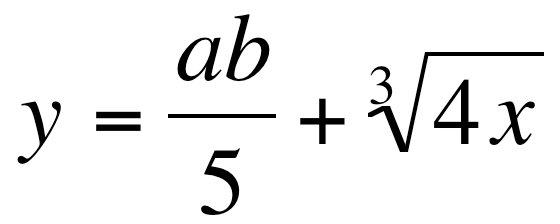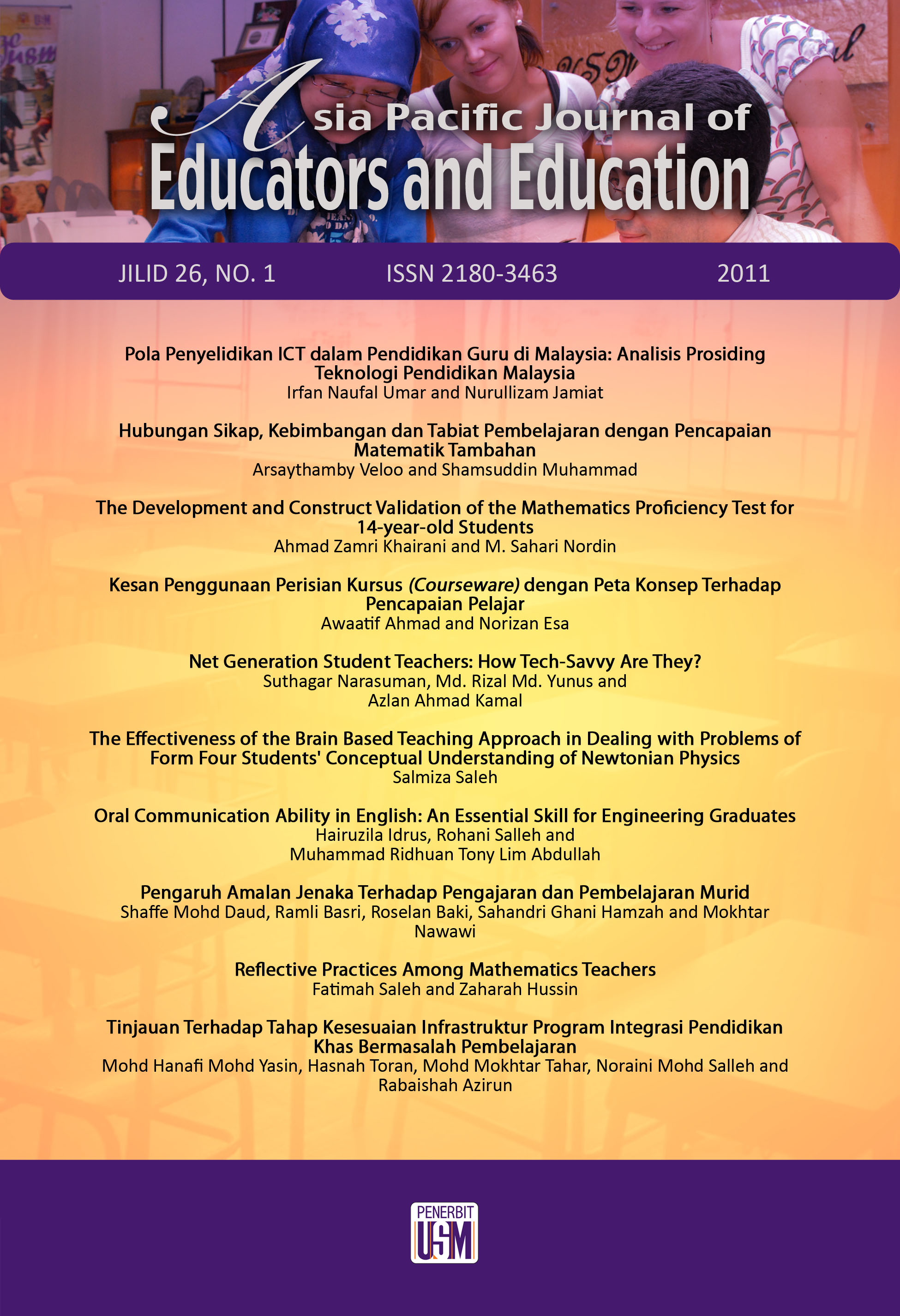The style guidelines of the most recent edition of the Publication Manual of the American Psychological Association (http://apastyle.apa.org/) should be followed.
Manuscripts should be organized in the following order:
- Title, Authorship and Affiliation (single page)
Please give first, middle and last name but omit titles. Give the affiliation of each author and complete mailing address of the institution where the work was conducted. If current address of an author is different, include it in the footnote on the title page. Please denote the corresponding author with an asterisk and provide the email address of the corresponding author.
- Abstract
- The abstract should be no longer than 300 words.
- The abstract should be a concise and factual description of the contents and conclusions as well as an indication of any new findings.
- Keywords
Keywords are to facilitate the retrieval of articles by search engines and will be used for indexing purposes, therefore do not use general terms. Provide a maximum of 5 keywords. Be sparing with abbreviations: only abbreviations firmly established in the field may be eligible.
- Text
Text may include all of this following:
- Introduction
- Literature review
- Methodology
- Results
- Discussion
- Conclusion
- Acknowledgements
Collate acknowledgements in a separate section at the end of the article before the references and do not include them on the title page, as a footnote to the title or otherwise.
All research articles should have a funding acknowledgement with the funding agency written out in full, followed by the grant number. Multiple grant number should be separated by comma and space.
e.g. This work was supported by World Health Organisation [grant number xxxx].
- Appendices
If there is more than one appendix, please label each one with a capital letter (eg. Appendix A, Appendix B). Each appendix must have title.
- References
Authors should pay particular attention to the accuracy and correct presentation of references following the standard American Psychological Association (APA) reference style.
Text citation
Every reference cited in the text must also be in the reference list (and vice versa). References cited in the abstract must be given in full.
Example:
Single author:
(Zuckerman, 2000)
Single author with page number:
(Zuckerman & Kieffer, 2000, p. 322)
Two authors:
(Zuckerman & Kieffer, 2000)
Three to five authors:
-First time the reference occur:
(Haque, Wadud, John & Rahman, 1988)
-Subsequent citation:
(Haque et al., 1988)
More than five authors:
(Bruton et al., 2005)
List of Reference
Names of authors in the reference list must be given in full and arranged alphabetically and then further sorted chronologically if necessary. More than one reference from the same author(s) in the same year must be identified by the letters "a", "b", "c", etc., placed after the year of publication.
Example:
- Book:
Scott, P. (1984). The crisis of the university. London: Croom Helm.
- Article in journal:
Charge, N. J. and Giblin, K. (1988). Learning English in a video studio. English Language Teaching Journal, 42(4), 282–287.
- Chapter in books:
Anand, P. B. (1999). Issues of inequality in managing water supply in Asian Cities. In M. Matteingly, J. Davila, A. Atkinson, & E. Fernandes (Eds.), The challenge of an environmental management in urban areas. London: Ashgate.
- PhD/Masters Dissertation:
Kline, M. W. The relationship between motivational variables, anxiety, exposure to English, and language learning strategies among adult ESL learners. PhD dissertation, University of Southern California.
- Article in press:
Zuckerman, M., & Kieffer, S. C. (in press). Race differences in face-ism: Does facial prominence imply dominance? Journal of Personality and Social Psychology.
- Special Issue (for entire issue):
Ramli Mohamed, & Adnan Hussein. (Eds.). (2006). Media in Malaysia: Aspirations, Choices and Realities [Special issue]. Kajian Malaysia, XXIV (1&2).
- Special Issue (for article in issue)
Ahmad Murad Merican (2006). Telling tales, print and the extension of media: Malay media studies beginning with Abdullah Munsyi through Syed Shaykh Al-Hady and Mahathir Mohamad. In Ramli Mohamed & Adnan Hussein (Eds). Media in Malaysia: Aspiration, Choices and Realities [Special Issue], Kajian Malaysia, XXIV (1&2), 151–170.
- Conference/proceeding:
Chow, W. L., & Susela Devi, S. (2001, October). Accounting Disclosure Practices and Firm Characteristics: Evidence From Malaysia Based On Segment Information Disclosure. Paper presented at the 13th Asia Pacific Conference on International Accounting Issues, Rio De Janeiro, Brazil.
- Unpublished dissertation:
Wilfley, D. E. (1989). Interpersonal analyses of bulimia: Normal weight and obese. Unpublished doctoral dissertation, University of Missouri, Colombia.
- Technical and research report:
Mazzeo, J., Druesne, B., Raffeld, P.C., Checketts, K.T., &Muhlstein, A. (1991). Comparability of computer and paper-and-pencil scores for two CELP general examinations (College Board Rep. No. 91–95). Princeton, NJ: Educational Testing Service.
Electronic resources:
- Books
VandenBos, G., Knapp, S., & Doe, J. (2001).Role of reference elements in the selection of resources by psychology undergraduates [Electronic version]. Journal of Bibliographic Research, 5, 117–123.
- Journals
Delbert, C., Montada, L., & Schmitt, M. (1987). General belief in just world scale. Journal of Management, 10 (2), 1–3. Retrieved 12 December 2001 from http://erzwiss.unihalle.de/gliederung/paed/psych/segbjw.pdf
- Article in an internet-only journal:
Fredrickson, B. L. (2000, March 7). Cultivating positive emotions to optimize health and well-being. Prevention & Treatment, 3, Article 001a. Retrieved November 20, 2000, from http://journals.apa.org/prevention/volume3/pre0030001a.html
- Multipage document created by private organization, no date:
Greater New Milford Area Healthy Community 2000.Task Force on Teen and Adolescent Issues.(n.d.). Who has time for a family meal? You do! Retrieved 5 October 2000 from http://www.familymealtime.org
Artwork
Please make sure that artwork files are in acceptable format (TIFF, JPG or MS Office files) and with publication quality resolution: 1200 d.p.i. for line drawings and 300 d.p.i. for colour and half-tone artwork.
Tables
Number tables consecutively in accordance with their appearance in the text. Place footnotes to table below the table body and indicate them with superscript lowercase letters. Avoid vertical rules. Be sparing in the use of tables and ensure that the data presented in tables do not duplicate described elsewhere in the article. Please provide source (author name and date) if the table was cited from other publication. Please use the table in word document, avoid using the embedded table. For example, see here.
Figures
Each figure should be on a separate sheet and clearly labeled.
All illustrations must be of high quality to agree to immediate reproduction.
Ensure that lettering and lines are dark enough, and thick enough, to reproduce clearly, especially if reduction is necessary. Remember that fine lines tend to disappear upon reduction.
Indicate its preferred position in the text.
Contributions, which are otherwise acceptable, may be rejected on the grounds that illustrations are of unsatisfactory quality.
Notes
Footnotes are not allowed. Endnotes must be indicated in the text by superscript numbers, and kept as short as possible.
Formulas and Equations
- use a slanted line (/) to present fractions in the line of text.
Example: A = [(ab/c)1/2] 2
- for equation that cannot be set in line of text, display it on a new line, and double space above and below the equation.
- number displayed equations consecutively, with the number in parentheses near the right margin of the page.
Example:
 |
(1) |
Listing
- For elements within a paragraph or sentence, identify elements in a series by lowercase letters (not italicized) in parentheses.
Example: The participant’s three choices were (a) working with another participant, (b) working with a team, and (c) working alone.
- For separate paragraphs in a series, such as itemized conclusions or steps in a procedure, are identified by an Arabic numeral followed by a period but not enclosed in or followed by parentheses.
Example:
The human resource development objectives can be summarized as follows:
- To enhance organizational performance by institutionalizing an objective and open performance management system.
- To align individual and organizational needs and to develop business leaders by implementing a career development system.
Heading
Levels of headings are formatted as follows:
FIRST LEVEL HEADING (uppercase, bold, flush left)
Second Level Heading (upper lowercase, bold, flush left)
Third Level Heading (italicized, upper lowercase, bold, flush left)
Fourth level heading (sentence case, italic, flush left)
|


